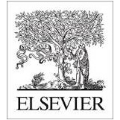Understanding how scaffolding strategies influence human understanding in human-robot interaction is important for developing effective assistive systems. This empirical study investigates linguistic scaffolding strategies based on negation as an important means that de-biases the user from potential errors but increases processing costs and hesitations as a means to ameliorate processing costs. In an adaptive strategy, the user state with respect to the current state of understanding and processing capacity was estimated via a scoring scheme based on task performance, prior scaffolding strategy, and current eye gaze behavior. In the study, the adaptive strategy of providing negations and hesitations was compared with a non-adaptive strategy of providing only affirmations. The adaptive scaffolding strategy was generated using the computational model SHIFT. Our findings indicate that using adaptive scaffolding strategies with SHIFT tends to (1) increased processing costs, as reflected in longer reaction times, but (2) improved task understanding, evidenced by a lower error rate of almost 23%. We assessed the efficiency of SHIFT's selected scaffolding strategies across different cognitive states, finding that in three out of five states, the error rate was lower compared to the baseline condition. We discuss how these results align with the assumptions of the SHIFT model and highlight areas for refinement. Moreover, we demonstrate how scaffolding strategies, such as negation and hesitation, contribute to more effective human-robot explanatory dialogues.
翻译:暂无翻译





